It’s free. Yes, Dirty Bomb is a free-to-play, class-based first-person shooter. The game is introduced through a short cutscene exploding with pizzazz and bold words laying out guidelines for what players should or should not do in the game, such as rushing into the mission without your teammates. The game will not penalize you, but the other team will by blowing you to pieces. Even if you are the lone-wolf type and have continuously sustained a kill-death ratio worthy of a banana sticker, chances are slim that that you can win by yourself in an objective match without help from other players.
If you have played Brink (the parkour of FPS shooters) before then you may have already found several similarities between Dirty Bomb and Brink. The biggest resemblance based on face value is the style of the graphics. The low poly mesh applied to the environment and characters in Brink is also visually implemented in Dirty Bomb. But by personal taste, I find the color palette and low-poly models in Dirty Bomb slightly more appealing. “Besides the graphics, the common denominator for their likeness is obvious: both games are developed by Splash Damage, the same studio that developed Wolfenstein: Enemy Territory, Enemy Territory: Quake Wars, Brink, and helped developed DOOM 3‘s multiplayer maps component.”
Dirty Bomb is frantic and requires high-intensity button smashing as well as lightning-flash reactions. The maps do not stretch out extensively nor do they have an exploratory feel, which makes the levels almost impossible for me to pause for a second and have a breather. I’m not a big fan of caffeinated sodas, but I don’t mind glugging down two cans of Mountain Dew whenever I feel the urge to play this game. Point blank, you need to be wired and alert. The maps are too compact to avoid enemy encounter for too long, but that does not necessarily deem that the game is unwelcoming to new comers or for those who are not blessed with demigod dexterity. It’s just the nature of the beast, like Counter-Strike or Call of Duty, Dirty Bomb fashions itself in a quick-paced environment that will leave you feeling vulnerable and energized, and at least for me, it usually takes a few matches until the controls feel comfortable enough to execute what I want to do.
The variety is restricted to two types of mods that you can play and from most of my experience playing first person shooters, Dirty Bomb’s mods do not differ much from most online shooters—it follows a familiar flow in the multiplayer world of shooters, which essentially boils down to completing an assigned task, and some of which are layered with time constraints.
Objective mode is the preferred mod, and as the name suggests, both opposing teams are handed objectives that counter each other. Racking up those kill streaks does not hold as much weight as completing the objectives because it is not how much people you have taken down that will affect the scoreboard, rather it is the number of completed objectives.
One of the reasons I easily find myself staying away from playing Call of Duty online is its nature of isolating and dispersing players within the same team, especially in team deathmatch. As if it is not ironic enough, most games involving team deathmatch might as well be a single-player mode, because regardless of the word “team” inserted in its phrase, each player would continue to play by themselves, gunning down the nearest target on their iron sights. On the other hand, Dirty Bomb leaves all the concept of one-man army and greatly shapes their mods based on team objectives; teamwork makes the dream work. But that is not to say that taking down your adversaries mano a mano would not be in your favor, because it will be. Lesser opponents mean lesser obstacles.
The second mode is stopwatch, which is extremely similar to objective with exception of time. The feel of the game changes because objectives now have to be completed in the fastest time possible.
Despite Dirty Bomb considerably taking in a good amount of standard FPS gameplay, there is one aspect that makes it inimitable, and that’s its implementation of Mercs, which are the various playable characters. There are fourteen Mercs in total along with a new addition, Phantom—a katana-wielding, semi-cyborg-looking dude. And no one is stratified to a single Merc; feel free to pick and choose whichever ones you feel are the best for you and your team. Moreover, Dirty Bomb doesn’t have a campaign that fleshes out a narrative, but the background story of each Merc makes up for the lost single player plot. If you want to read more about each character, Dirty Bomb’s official website (http://dirtybomb.nexon.net/mercs/) considerably elaborates on each mercenary, displaying their level of attributes: health, speed, combat, objective, and support. Though it may seem that some mercenaries may have higher specs compared to others, this does not necessarily mean that they are superior. Factors such as abilities and loadouts affect the stats of the character just as much.
When I’m assembling my three-people lineup, I switch between Kira, Nader, Aura, and Proxy, but it’s usually Kira, Nader, and Aura. There is a character I want to include in my pick, and that’s Sparks, but I already have a medic. Sparks can revive teammates from a good distance with her revivr rifle, and it’s capable of damaging enemies as well. The revivr rifle is ideal for crossfires where downed players can be revived from a decent distance without having to physically stand beside them in the middle of bullet hell extravaganza. She also carries small health packs that can be deployed to teammates anytime and anywhere, triggering instant player health regeneration. The downside to Sparks is her default inventory, which consists of a sub-machine gun, handgun, and combat knife—not really my cup of tea. Though Aura may not have the capacity to directly increase health from any given distance, her default weapon selection outmatches Sparks because you can never go wrong with a shotgun. With Aura’s shotgun clearing the way, her defibrillator impairing enemies, and her ability to deploy healing stations easily makes her a well-balanced combat medic.
Having a medic in your team is not even debatable, so choose wisely. Once I have a healer (which is Aura), I think about battle strategies, do I want fast but short-burst hits or slow but heavy hits? Depending on which tactic I want to pursue, I pick Nader or Kira as my heavy gunner specialist for that extra fire support. Even though Proxy does not deal as much damage as Nader or Kira, she is unquestionably swift, and she can disengage planted C4’s and repair the crew’s broken arsenal(s) much quicker than most characters; she is the gal I pick if I want objectives done quickly.
And like most competitive games, when I feel like I have been wiped out, then that’s when I stop playing. The only thing that will keep me going is if a friend keeps pleading to play “one more match” until it’s 4:00 a.m., and guess what? This should be shared with friends, because the game is free.
—
The Mary Sue Dirty Bomb Interview
Interviewer: Kaira Villanueva, contributor, The Mary Sue
Interviewees: Neil Alphonso (NA), Lead Designer; Edward Stern (ES), Lead Writer
Kaira (The Mary Sue): What led to the decision of making Dirty Bomb free-to-play?
NA: The easy answer is that it lets everyone have a chance to play it and make their own mind up as to how much value the game provides for them. The other big rreason is that live support is critical to an online game, and we needed a business model that allowed us to continue to support the game as an imperative.
ES: The games industry is at an odd stage right now. Clearly the “Fifty Bucks Or F**K Off” business model where you pay for all the content up front, no matter how much of it you actually want or can use, well, it’s still great for some games. But for almost everyone, you either have the time or the money but not both. As long as players don’t feel they’re being nickel-and-dimed, or strung along, it lets them just pay for what they want (in either grind time or money), and lets us keep supporting the game.
Kaira (TMS): I like the idea that players are playing for credits and buying off Mercs along the way, but others argue that spending 50,000 in-game credits for a Merc maybe too much. What are your thoughts on this transaction? Is it important in the game?
NA: We definitely want permanently unlocking a Merc to seem like A Big Deal, but we’ve been thinking about different things to do with the pricing, such as running more sales and giving players other creative ways to earn the Mercs outside of money or Credit purchases.
Kaira (TMS): Dirty Bomb emphasizes on teamwork. Singlehandedly taking on an objective against a team that has it together does not pan out very well—I’ve tried! Is there wiggle room for being a lone wolf, or possibly a mode later on that would cater to that tactic (i.e. Deathmatch or Free-For-All)? What other modes will be included on top of Stopwatch and Objective?
NA: Lone wolves who are effective at neutralizing or distracting the other team can help their team win a match, but it does normally take at least one or two players actively engaging with the objectives to secure victory. It’s extremely unlikely that a team of lone wolves will ever win against a team that is cooperating, though!
We’ve done a couple of testing weekends with Execution Mode, which is a one life per player with multiple rounds game mode. It’s gone over well, but we have some further tweaks to make based on player feedback and data.
Kaira (TMS): My team choice consists of Kira, Aura, and Nader (occasionally, I switch Kira for Proxy). After reading their backgrounds, I noticed that their outfits are inspired by their former occupations—nice. What inspired their backstory? And what was your process for translating their narrative into visual character designs?
ES: Sometimes we start with the tactical role and then look for the character, sometimes we start with the voice or an idea for a combat bark and work out who’d shout such a thing. And sometimes we realize we just don’t seem to have a character from any part of Asia and isn’t it about time that we did?
No matter where you start from, you have to design the whole character. Not just their tactical role and gameplay ability, weapons, items, etc. but also how they look and sound. What words are you putting in their mouth? What actor do you want to voice them? Would they convince as a character if they weren’t armed? How does their personality match their tactical role? Is it subverting a stereotype, or do they do what it says on the label?
And it doesn’t matter if you have good intentions as a developer, you can still get things badly wrong. In fact, the more you inclusive and diverse you try to make your characters, the more likely you are to inadvertently produce something problematic. But as a writer you have to believe you can write beyond your own life experience and personal demographic as long as you do the work. So you do your research and you talk to people and try to be careful with your script and the casting and the direction of the voice actor.
For instance, I really wanted to work again with a tremendous actor named Jimmy Akingbola. His parents are from Nigeria, he grew up in London, his American accent is perfect, his RP English is perfect and his West African accents are (as far as I can judge, for what that’s worth) great. And we had a character concept for Fletcher, a black male engineer in shades, baseball cap and muscle vest, who was starting to get a bit close to generic Cool Black Game Guy. So I thought “what if he’s not cool…he’s immaculate?”
I live in a very diverse part of London with a big Sub-Saharan African community. There are lots of impossibly dapper, magnificently stylish and utterly confident West African guys who are just utterly on top of every situation. I wanted someone with that kind of swagger and style in the game, but I was nervous about writing a Nigerian character. No matter how much research I did into Lagos slang, how would I know if I’d unwittingly evoke something really problematic, some imperial/colonial horror, or Igbo or Hausa/Fulani or Yoruba point of tension.
So I gave Jimmy the script and told him what I tell all our actors “If any of this is even slightly problematic, you HAVE to tell me, we’ll change it or cut it.” He looked it over, nodded, cleared his throat and then suddenly there was Fletcher, large as life. If we’ve got him wrong, that’s my fault. But so far people seem to respond positively to Fletcher. Even if he wears his stunnaz indoors.
Kaira (TMS): How significant is gender representation for Splash Damage and specifically for Dirty Bomb?
NA: The importance of gender and race representation was actually one of the very first things set in stone when we started Dirty Bomb; this was always going to be an IP that we fully controlled so we set out to have it represent our principles rather than have it dictated to us by market forces, which has happened to us in the past.
ES: It’s definitely something we needed to do better at. We made a game called Brink back in 2011 and it had no playable female characters. None. That was at the very best a dumb mistake. We made what at the time seemed like a quality or resource decision. We’d already tested the playable male animation rigs, we wanted to make playable female characters then realized we didn’t have the time/budget resources to do so to the same level of quality. So rather than make sub-standard female characters, we didn’t make any, which made it look like we just didn’t want them in the game. Obviously we should have never let ourselves get in that position, we should have done both female and male animation rigs up front and had more human beings represented rather than more customization options for just dudes. Lesson learned. Let’s make a different mistake next time.
So as a company we wanted to do better, but also, come on, Dirty Bomb is set in London, our backyard, it’s one of the most diverse cities on earth. Why have such a diverse setting and then populate it solely with Anglo Commandbros? How wouldn’t that be a bit boring? Never mind being inclusive, how much of humanity are you going to exclude, deliberately or otherwise?
We have 25 different nationalities in the office (almost all male and pale, alas). For the majority of us there are lots of games (and movies and TV shows) with characters who look and sound like us. Not everyone has that experience. Games should be for everyone, even if they’re MP shooters, and perhaps not always the subtlest of interactive art or the richest of texts. In our games you get run around and blow shit up. It’s fun. Everyone should try it, and not made to feel unwelcome by it. Besides, it’s just more interesting, for players, and for us as developers. We wanted better representation but not tokenism. The Mercs had to be in the game because they were the best in the business at what they did, not because they were eye-candy for a particular demographic.
But just making efforts and taking pains doesn’t ensure success. It’s so easy for overall tone to get away from you. The character model, the facial modelling, the 2D textures, the casting and direction of the voice-over performer, the lines in the script, how the animations and exertions combine, it’s really easy for stuff to end up too big, or too small or too demonstrative. We’ve been making this kind of game with characters barking out combat VO out of context for a while now, but it’s still very easy for things to go wrong or weird.
Kaira (TMS): Besides implementing character designs that do not exploit women Mercs, what other measures are used to properly represent Kira, Aura, Nader, and Proxy?
ES: The key question we ask ourselves is “are these characters here to just be female?” And do we make them throw grenades “like a girl” (whatever that means)? No. They’re soldiers. They throw grenades, extremely well. Then they shoot you in the head, and…is there a female version of “teabag”? Really? Wow. OK…er, “clam-dunk” you, and move on.
We walked a narrow line with Kira (played by Eleanor Matsuura). I wanted, in my clumsy way, to portray the plight of the Potential Manic Pixie Fire Support Genki Girl. She’s a feminine Asian woman who’s bright, charming, and really good at killing people with an orbital weapon satellite. People can’t handle that she’s friendly and Kawaii-cute and so competent at killing. As she regularly complains, “Why won’t people just see me for who I am, and not for the colossally destructive weapons satellite I control?”
Also, there’s a cultural burden: “No I don’t want to watch Anime with you, no I don’t want to borrow your Manga, Why would I want to “kimonover to your place”? Ever? No, don’t speak your thoughts. Ew.” She’s not the first bicultural woman to have to deal with how they’re seen and assumed to be, not who they are.
So, OK, it’s not as if having a Merc like Kira in an MP shooter is a particularly complex exploration of attitudes towards femininity and competence, or patronizing racial attitudes. I’m just struck by the predicament of women who are incredibly good at what they do but feel stuck knowing how to present themselves, or find themselves being treated as a well-meaning positive racial or cultural stereotype.
In the case of Aura, we had a need for a medium-body type female medic. I wanted an utterly unimpressible witheringly sardonic African-American woman from the South, as if Wanda Sykes had been in the army for a decade but had never been promoted beyond sergeant. For Aura’s voice, we got the amazing Ayesha Antoine, who’s Caribbean British, and did a great job. But listening to her voice in the game, I wonder if my direction was up to scratch. Is Aura’s characterization too big? Too Country? Is she forthright, or edging into stereotype?
So you ask people you trust who have a more educated ear. I asked some African-American friends “Look, I feel the whitest malest developer in the world right now, but could you listen to this and tell me if it sounds bad?” They said it was kind of broad, and approaching the line but not over it. And you know what? I’m still not sure I got it right. I’m poised to cut some of her lines if people find them problematic.
As for Nader, all our Assault Mercs up to that point had been big males, so we for our grenadier, we wanted a woman. And we didn’t have a German character yet. So we made ourselves a Nordic lady-grenadier, and Jane Perry did a wonderful dry, powerful read. Nader’s awesome. She’s not a good grenadier for a woman; she’s just a good grenadier. You mess with her at your peril.
Also, we didn’t have any LGBT Mercs. So in her character bio, we gave Nader a wife. But so what? She doesn’t fire grenades in a particularly or distinctively queer way (although now I insist someone make a game called Queer Grenadier). Her sexual identification and partner don’t have anything to do with how well she does her job. I just didn’t want there to be a future with no gay women in it.
As for Proxy (voiced by the brilliant Katie Lyons), she was one of the first characters we recorded. We wanted to prove (to ourselves as much as anyone else) that we could make a shooter character who was cool, and fun, and just happened to not be a guy.
And while there are lots of real women who don’t present as stereotypically feminine (and why should they?), we wanted to show we could make a feminine female combat character. It’s easy to fall into the trap of demonstrating female competence by removing any traditionally feminine qualities. You make them as good as men by making them female men, she-bro-troopers. Games have seen a lot of female characters clearly inspired by Jenette Goldstein’s amazing characterization of Vasquez in Aliens and…end up with equally clichéd She-Grunt. Which isn’t diversity, it can feel like swapping one cliché for another.
We just wanted a working class London girl who’d had a great time in the army, was a little bored since she left, and just loves getting back into action…while still being fairly conventionally feminine. You can be great with a pump-action shotgun and IEDs, and still care about the importance of a good protein hair treatment, you know?
Also, here in the UK there’s a common media demonization of young working class people as “Chavs”. We wanted an identifiably London working class army girl who was competent and dignified and lively. Almost like she was an actual human being, even.
We really lucked out with Katie Lyons for Proxy’s voice. It’s so hard trying to cast women voice actors. Unless you’ve seen their work on stage or screen, you only have their radio showreel to go from. And on British commercial radio no matter how experienced the actress it seems there are only two voices permitted: a bright cheery not-too-working class accent for selling retail goods, and a purring posh Received Pronunciation hush-hushed vixen-voice to recommend high-end deserts and services. We picked Katie not knowing she’d just finished filming the first series of Bluestone 42, a BBC army comedy drama, and could shout “INCOMING!” more authentically than any of us could.
We also managed to get the wonderful Indira Varma as one of our Merc commanders. We were so lucky, between West End stage runs and Game Of Thrones, we assumed she’d be too busy but we’ve had a couple of separate sessions with her now. She has such great calm, dry authority. Gravitas, but with a twinkle in her eye. Is it weird that a woman is commanding a team of mercenaries? No. Just listen to her cause this commander could clearly do this job in her sleep.
Kaira (TMS): I personally feel that character design plays a big role in shaping the game, and thus shaping the community as well. Do you think adding playable women characters would encourage more players that identify as women to try out Dirty Bomb?
ES: We’d be delighted if gamers tried and enjoyed Dirty Bomb however they identify. And lots of people who don’t identify as women prefer playing game characters who do. But we’d be very flattered if women felt we’d done a non-terrible job of creating fun, interesting shooter characters.
Selfishly, we want Dirty Bomb to succeed, so we want lots of people to play it. But it’s also good for games in general if they’re played by more kinds of people. Actually, scratch that, that’s wrong – everyone’s already playing all kinds of games; it’s just the cultural perception that lags. So the more obvious it is that there are all kinds and skill-levels of gamer of all identifications, the better. We regularly get our developer asses handed to us in public matches by women (I’m looking at you, Lauren “Pansy” Scott). As developers we know there are hardcore shooter gamers who don’t identify as male, and casual shooter gamers who do. Dirty Bomb is fairly hardcore shooter for a hardcore audience. Why would we exclude gamers who identify as women? Why would we want to exclude anyone?
Kaira is perpetually hungry and when she is not thinking about food, she is either busy developing games or scrutinizing ecological patterns. You can tweet to her about hedgehogs and cupcakes @zovfreullia.
—Please make note of The Mary Sue’s general comment policy.—
Do you follow The Mary Sue on Twitter, Facebook, Tumblr, Pinterest, & Google +?



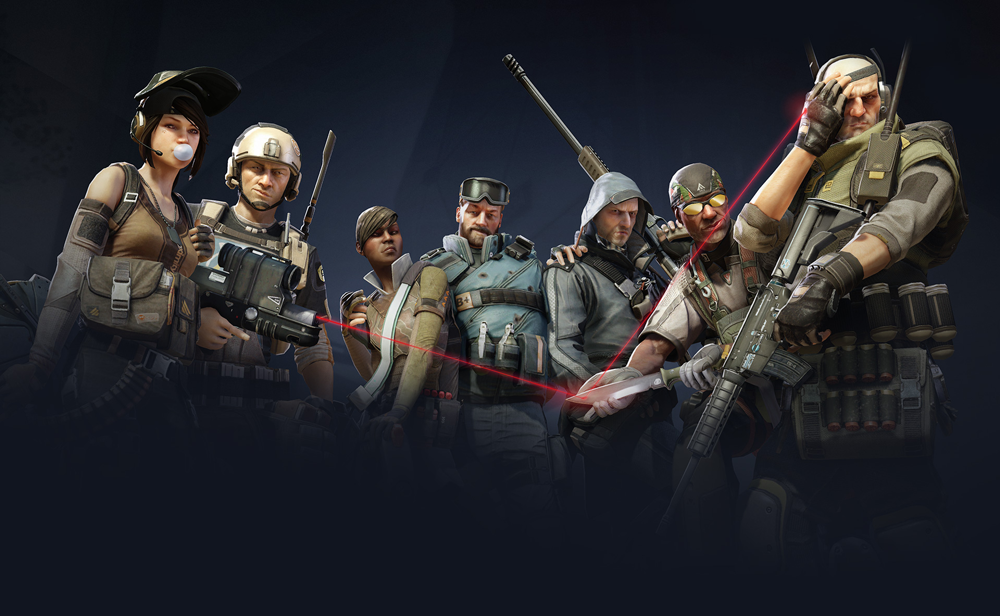
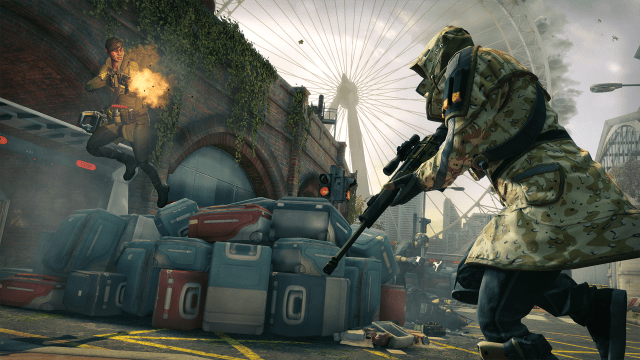
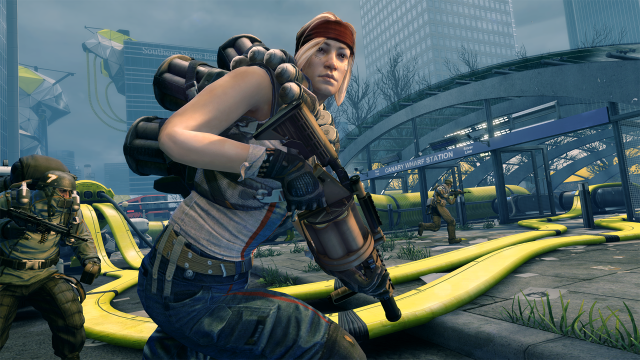
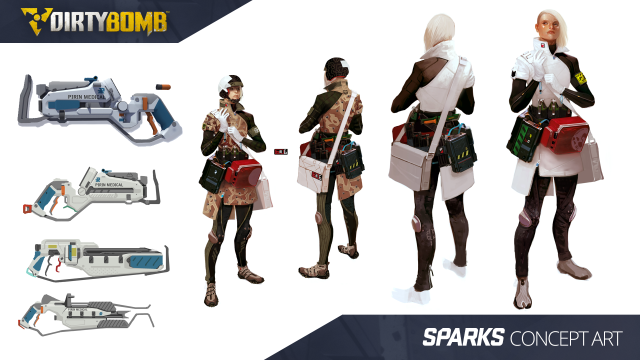
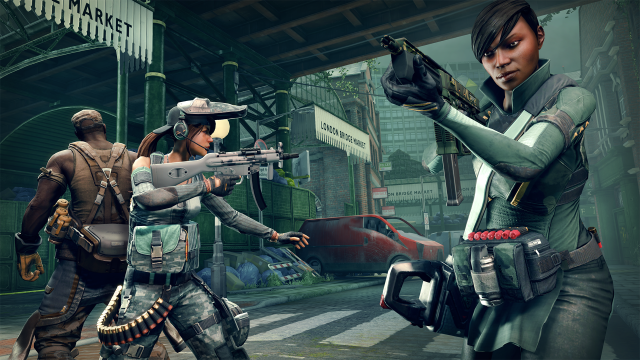
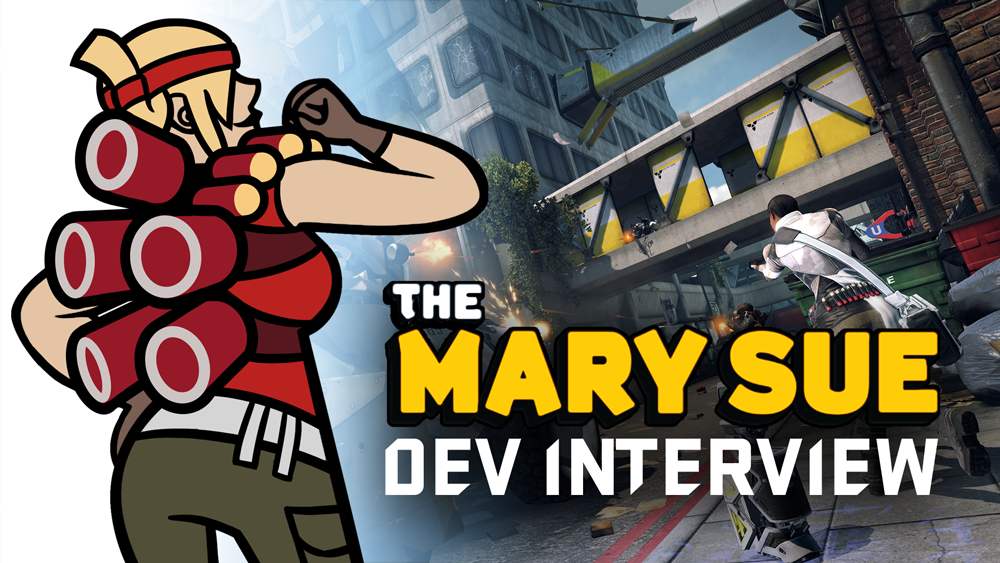
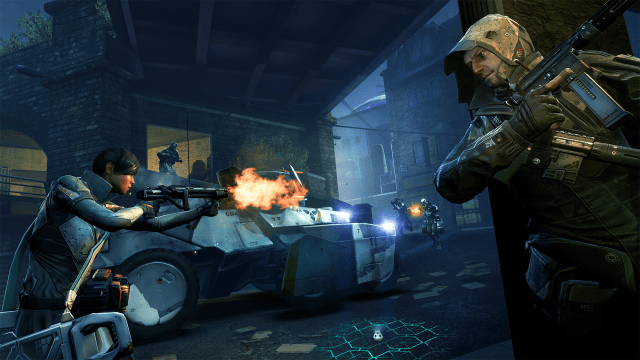
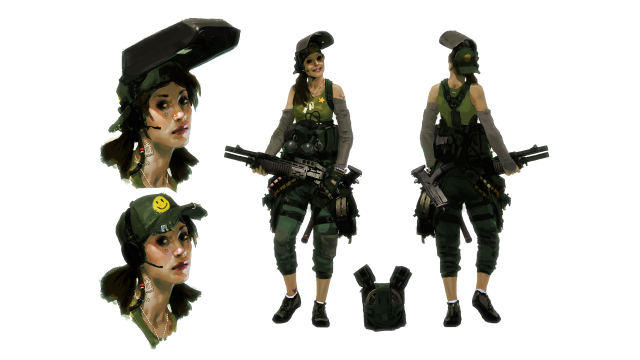
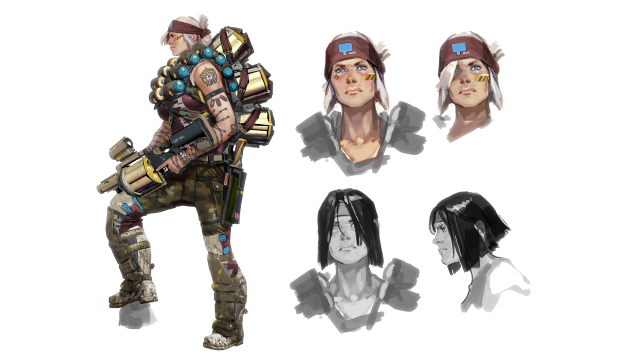
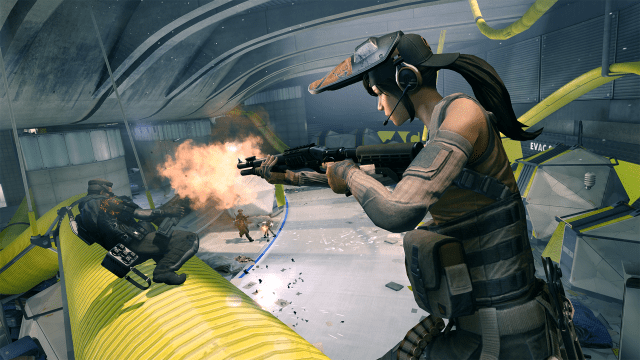
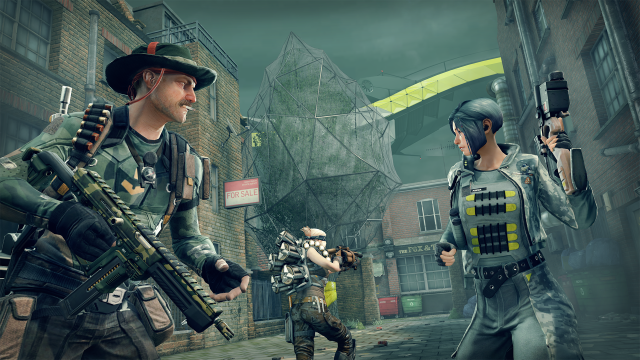





Published: Jul 26, 2015 11:00 am